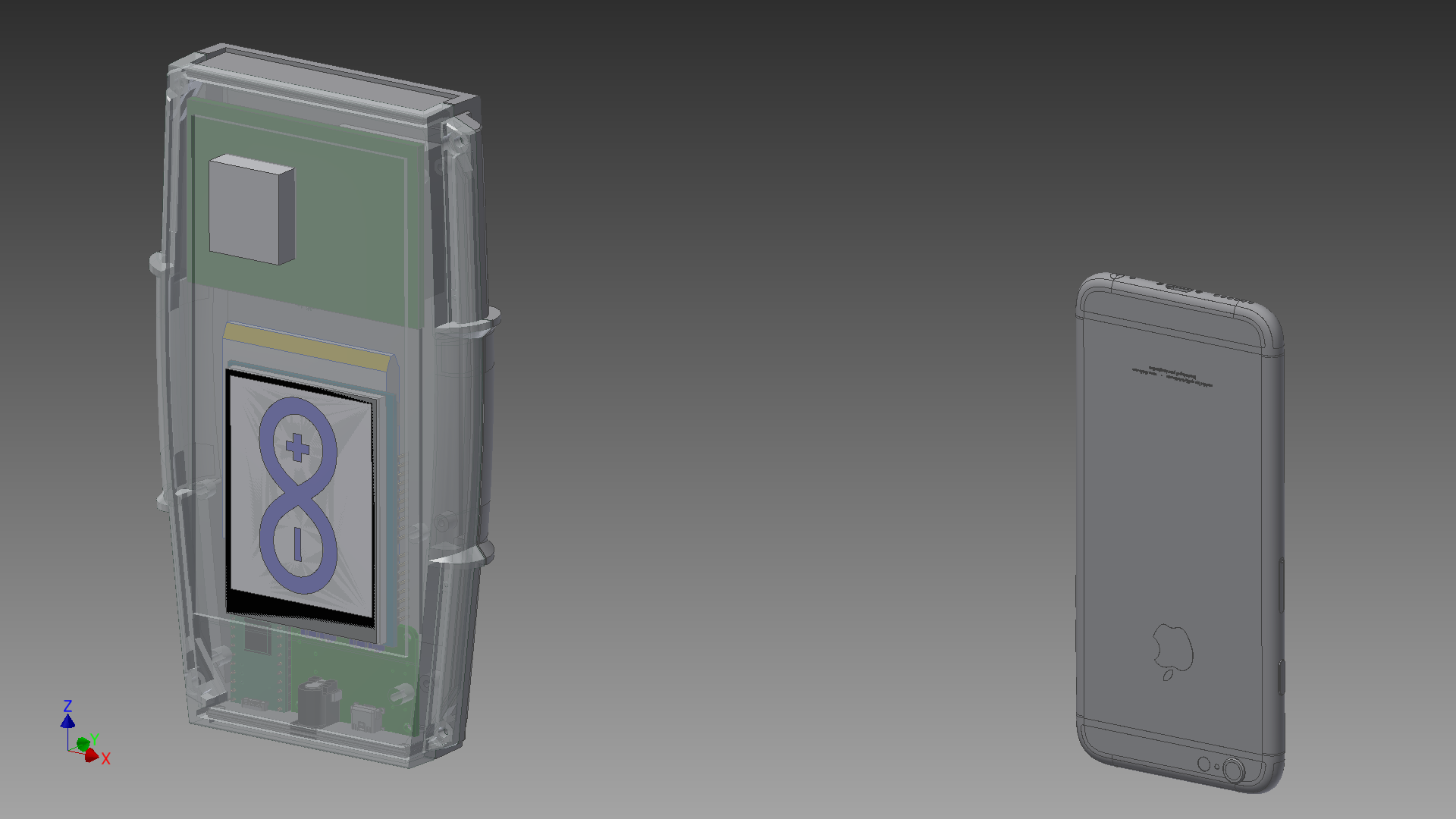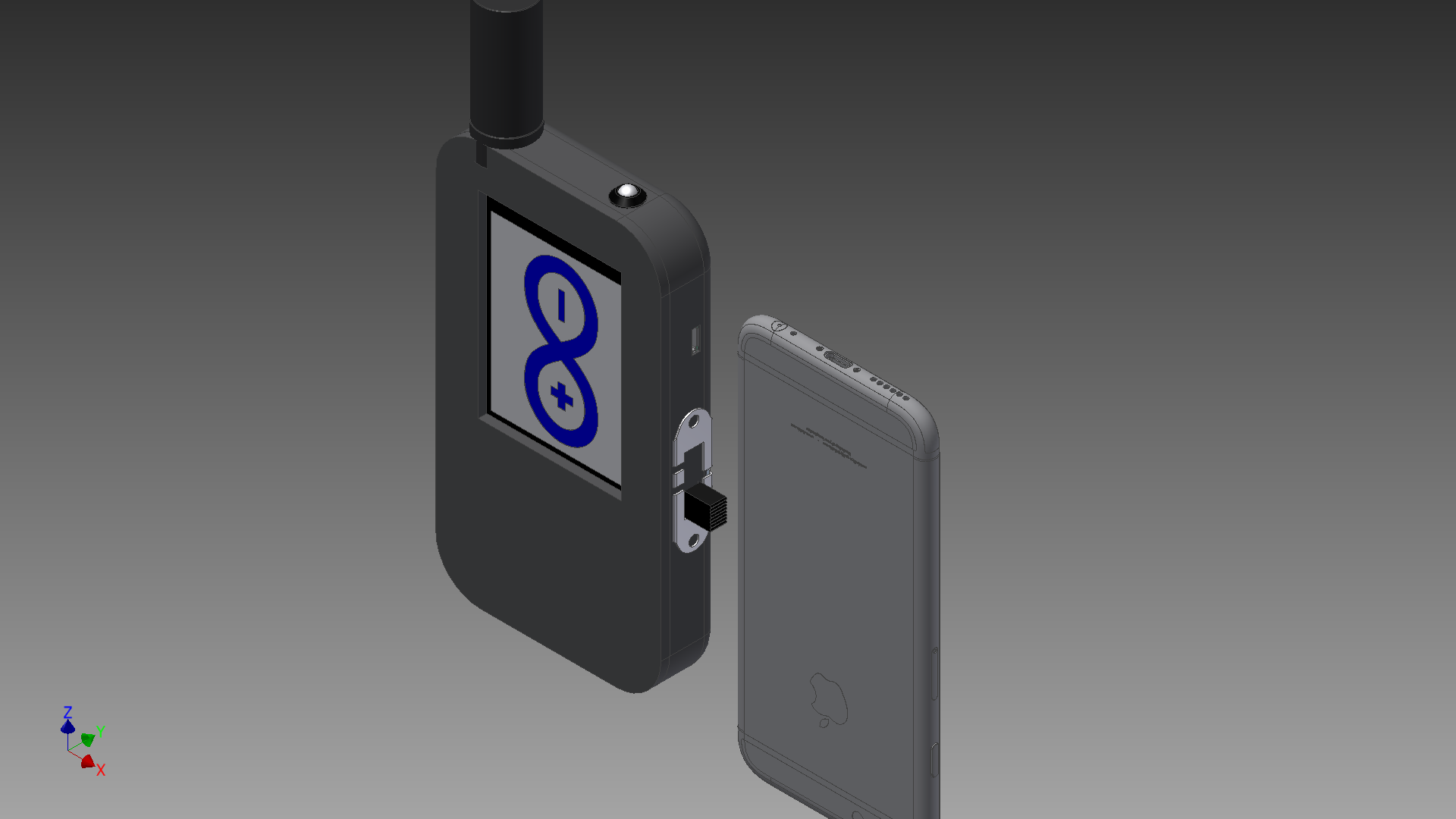With the coming together of better part selection it was possible to look at iterating the initial prototype designs. Using cad files and mockups of the current component list; Screen, MCU, Power etc. The v2 prototpe below was created (Iphone for comparison);

This design was based on a simple 3d printed case. No cover is shown just now so that we can see the layout of the components clearly. While 3d printing is useful, I also had a look around for an off-the-shelf solution. Off-the-shelf can be a cheap and quick way to get a prototype enclosed but generally there can be a lack of space so choosing the right one is vital. I made a layout mock up using the 66 Series Grip Cases from CamdenBoss;

The prototype is coming together. It's also interesting to consider a general "final product" design and what form that will take. A few discussions have resulted in 3 possible directions. All the below are based on a custom pcb instead of off the shelf components;



Finally, there's the question of thickness over height. By fitting all of the components behind the screen we can reduce the profile of the device at the cost of adding general thickness. Bringing a total thickness to 30mm - whopping in smartphone standards but still very practical;

I'd appreciate any feedback on what people think of the overall designs, do you have one that stands out as a favourite?
JW
Discussions
Become a Hackaday.io Member
Create an account to leave a comment. Already have an account? Log In.